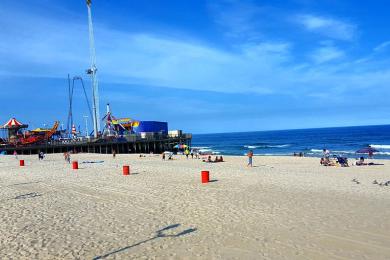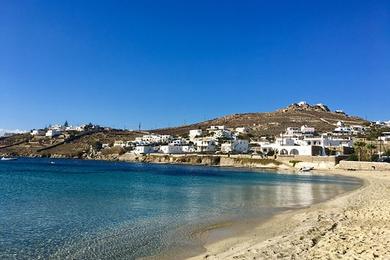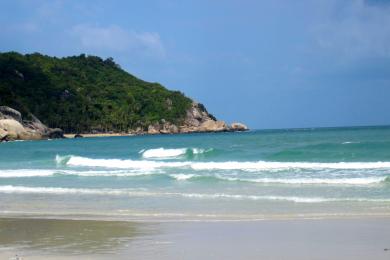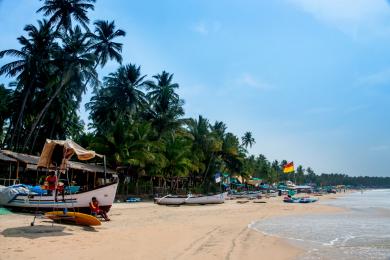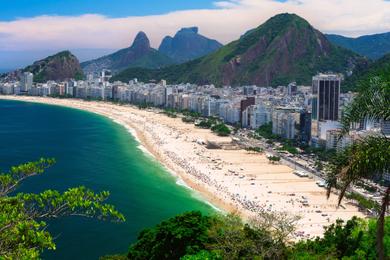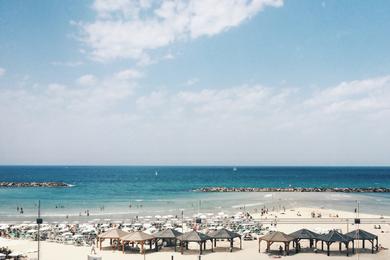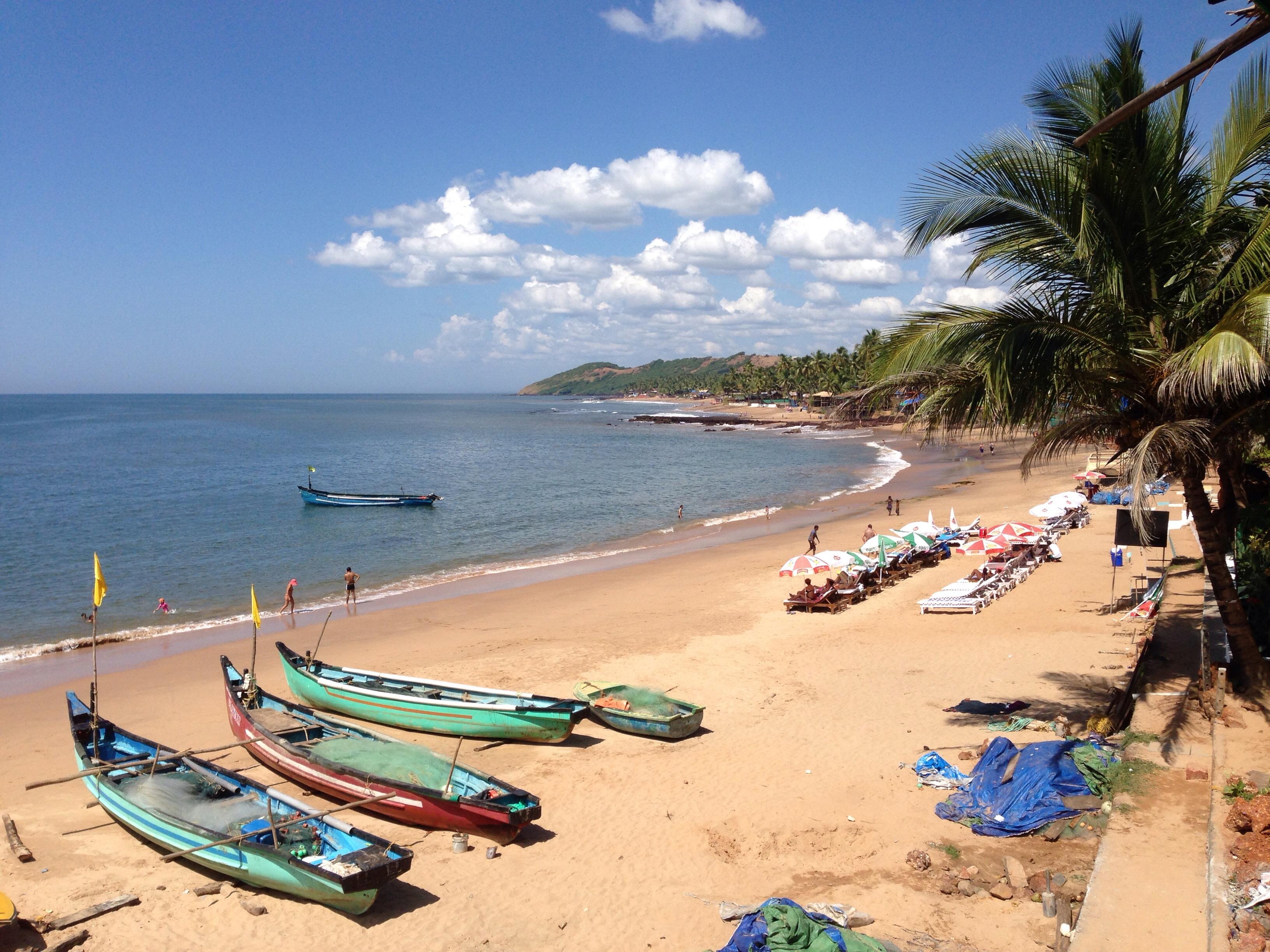We’ve all heard of Miami’s South Beach. Featured heavily in iconic films such as Scarface, Miami Vice, Baywatch, Goldfinger, and Ride Along, it’s one of the world’s most famed and instantly recognizable beaches. With its iconic Ocean Drive, renowned restaurants, luxury shopping, opulent hotels and resorts, and bustling nightclubs, South Beach is possibly the world’s most popular beach destination. Additionally, Miami Beach – South was named theBest Beach in the Top 50 Beaches in the United States list in 2022 by Randall Kaplan, the world's foremost beach expert who is known as "Mr. Beach.”
When you arrive at South Beach, you’ll immediately notice the beach’s incredible views. From the sand, beachgoers marvel at Miami Beach’s skyline. With its art-deco architecture, dramatic modern high-rises, and sky-scraping palm trees, the skyline is arguably South Florida’s most iconic sight.
Once you walk onto South Beach’s glistening golden sand, you’ll see that South Beach is more than just a tourist destination. It’s a naturally stunning beach in its own right. With vibrant turquoise water and glistening golden, it’s the perfect place to lounge and enjoy nature while just steps from the big city. While you’re there, be sure to catch South Beach’s vibrant sunsets, which peak at around 7 pm.
Popular white sand beach with many facilities- lifeguard, bathroom, lounge/umbrella rental; surfing spot; close to many restaurants and shops.
Located in Honolulu, Waikiki Beach is a beautiful and extremely popular beach with light brown sand and nearby palm trees. This beach is located in the popular touristy neighborhood of Waikiki. The beach’s name in Hawaiian means "spouting water" - the beach received this name because in the past multiple springs and rivers used to flow around this beach – as another fun fact Waikiki Beach was used by Hawaiian nobility for surfing. Waikiki Beach is one of the most famous beaches in the United State and was named the 4th Best Beach in the Top 50 Beaches in the United States list in 2022 by Randall Kaplan, the world’s foremost beach expert who is known as "Mr. Beach.” It is important to note that Waikiki Beach is a part of a larger beach area that stetches for almost two miles that is also called Waikiki Beach – in addition to Waikiki Beach, this larger beach area is composed of seven other beaches including Duke Kahanamoku Beach (also called Kahanamoku Beach and Duke Paoa Kahanamoku Beach Park), Fort DeRussy Beach (also known asFort DeRussy Beach Park, Gray’s Beach (also known as Grays Beach, Halekulani Beach, Kawehewehe, and Grey’s Beach), Royal Hawaiian Beach (also known as Waikiki Beach Center and Royal Moana Beach), Kuhio Beach (also known as "The Ponds", Kuhio Ponds, and Kūhiō Beach), Queen’s Beach (also known as Queen Kapiolani Beach , Queen’s Surf Beach, and Kapiolani Beach Park), and Kaimana Beach (also known as also known as Kaimana Beach Park, Kaimana’s Beach, Waikiki at San Souci Beach, Sans Souci Beach, and San Souci Beach).
Waikiki Beach is constantly threatened by erosion – some of Waikiki Beach’s parts have been significantly reduced in size due to erosion. There are multiple rocky jetties and seawalls near Waikiki Beach – the beach’s southwestern portion particularly has many rocky seawalls near it. Although most of the portions of Waikiki Beach have lifeguards, there are some portions that do not have lifeguard deployment – these portions are located near 2055 Kalia Road, in front a hotel named the Halekulani Hotel, and adjacent to another hotel named Hilton Hawaiian Village Waikiki Beach Resort. In addition to lifeguards,
If you went to Rio De Janeiro and didn’t go to Copacabana Beach, did you go to Rio at all? There’s a reason this beach is so world-renowned and the inspiration for Barry Manilow’s 1978 hit song, “Copacabana.” This magnificent beach spans four kilometers and is divided by “postos,” markers that help divide the beach by activities and groups that frequent there. If you’re feeling adventurous, you can even befriend many of the fun-loving Cariocas and get a deeper experience with the vibrant Brazilian culture.
During the day, there’s a plethora of activities to do at Copacabana like sailing, water skiing, surfing, hiking, biking, and spiking volleyballs. Beach chairs and umbrellas welcome all beachgoers to lounge and enjoy the breathtaking scenery.
Copacabana is split by 6 postos. North of Copacabana, posto 1 establishes a quieter section known as Leme Beach where older locals and kids from the nearby favelas like to hang out. Posto 2 marks the end of Leme Beach, and activity starts picking up on the beach. Here you’ll find plenty of opportunities to join the locals in games of volleyball, football (soccer), and frescoball. Posto 4 has a section of palm trees where you can enjoy the shade and watch slackliners try their hand at gravity-defying acrobatics just feet off the ground. The southern end of Copacabana, between postos 5 and 6, is the best area to surf, paddle board, and swim. The Copacabana Fort acts as a windbreaker that prevents waves from getting too choppy inviting surfers of all experience levels.
If you’re looking to slow down the pace over a meal, sit down at Churrascaria Palace, one of the best churrascarias (traditional Brazilian barbecue restaurant) in town, where waiters bring out some of the juiciest and well-prepared meats you will ever have. If you want something a little quicker or more casual, drop by Joaquina, a restaurant just south of posto 1 at the north end of Copacabana. With an ocean-facing location, outdoor seating, and traditional Brazilian cuisine, you won’t be disappointed by the experience.
As the day comes to a close and the nightcrawlers start to come out from their mid-day siestas, Copacabana transforms into a night owl’s haven. If you’re looking for live music at a hole-in-the-wall dive bar, drop by Bip Bip, a Copacabana staple just west of posto 5 famous for bringing local musicians to play some of the best choro and samba music around. If you want something a little roomier, check out Mariuzinn Disco Club. With two bars, two dance floors, and an upstairs balcony to top it off, you’ll be sure to have an authentic Brazilian night out.
Located within the popular and beautiful coastal resort of Playa del Carmen along the Riviera Maya in the state of Quintana Roo in Mexico, Playa del Carmen is a long and wide white sand beach. The beach is positioned along the Yucatan Peninsula on the Caribbean coast and has a beautiful backdrop of many oceanfront buildings, including hotels, restaurants, bars, nightclubs, a promenade lined with many shops, and a large park popularly known as the Parque Los Fundadores, which together offer Instagram-worthy views. Playa del Carmen is part of the Riviera Maya, a tourism corridor that attracts millions of visitors each year, contributing significantly to the local economy and emphasizing the importance of sustainable tourism practices and conservation efforts while protecting the natural environment and marine life.
A sweeping mile long beach (1.6 kilometers) with no permanent structures, Palolem Beach is a wonderful place to spend a lazy day lounging in the sun, playing beach soccer, or going scuba diving (among dozens of other activities). With no permanent structures on the beach – temporary huts are erected every season here instead – Palolem Beach has a much more rustic and natural feel than other, more developed beaches. As night falls, the southern part of the beach turns into a silent disco where visitors can listen to their own tunes and dance on the beach as the waves crash at their feet.
Anjuna Beach is a popular destination for backpackers and budget travelers. While it has all the typical features of a Goan beach – soft sands, crystal blue waters, lounges, and umbrellas – Anjuna Beach has a unique feature: every Wednesday the Anjuna Beach Flea Market opens. Here, visitors can find a range of local vendors and food stands to enjoy. Generally, beachgoers can also enjoy windsurfing, parasailing, jet skiing, and swimming here. As night settles, the scene at Anjuna Beach transforms, and bars like Shiva Valley and Curlie’s open their doors until the wee hours of the night.
Nissi Beach is a well-known travel destination located in the resort of Ayia Napa, Cyprus. The beach offers amazing scenery with water clean enough to be certified by the Blue Flag criteria. Since the early 2000s, Nissi Beach also became popular among clubbers with its iconic Nissi Bay Beach Bar. It is a great place to visit if you are looking for live music and themed beach parties.
Croatia’s Zrce Beach is located in Novalja on the beautiful, western island of Pag. The city of Novalja has a permanent population of nearly 4,000 people, but during the summer season, it’s a far different story -- flocks of partiers descend on the city for its raucous parties.
Zrce Beach is known for its beautiful, white pebbles and vibrant, teal waters, which set the scene for the perfect party atmosphere. Beachside bars and imported palm trees are plentiful, and so are the drinks. The main reason that visitors come to Zrce Beach is to visit the beach’s six clubs! Club options range from the affordable Papaya Club to the luxurious and scenic Noa Beach Club. Our favorite is Rocks Beach Club, which hosts the best nightlife events right on the sand. If you’re planning ahead, you should try to visit on a weekend of a music festival to get the full experience – festivals such as the Hideout Festival, Fresh Island Festival, and Black Sheep Festival are held annually.
For visitors who don’t particularly enjoy the party scene, Zrce Beach still offers a myriad of things to do. Activities on the beach include waterskiing, wakeboarding, and jet-skiing. Jet-ski rentals are available from Vodeni Sports Rental on the south side of the beach. The neighboring city of Novalja offers attractions such as the old Pag town, vineyard tours, and the Town Museum, which offers underground tunnel tours. Zrce Beach and Novalja as a whole offer something for all types of travelers, so be sure to book your trip today!
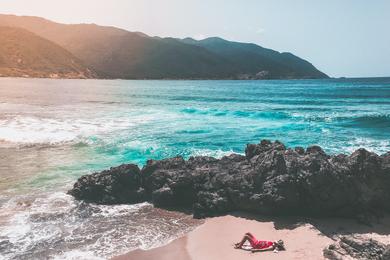
N/A
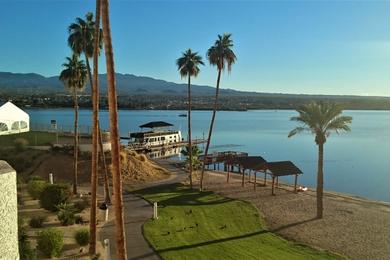
Top Party Beaches in Arizona
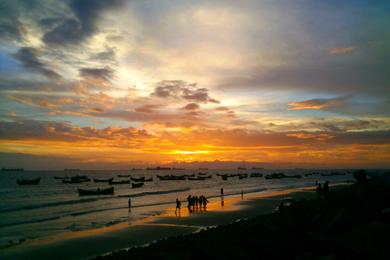
Best Party Beaches in Aruba
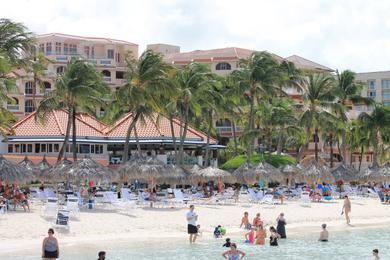
Best Party Beaches in Aruba
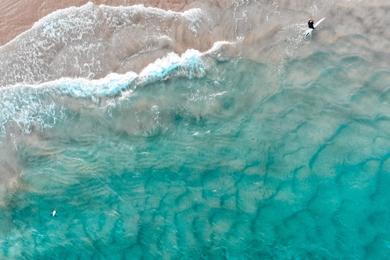
Top Party Beaches in Australia
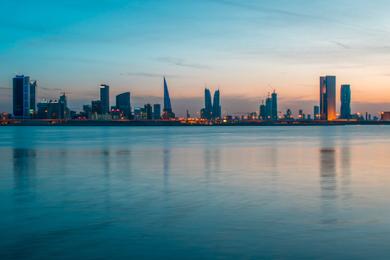
Top Party Beaches in Bahrain
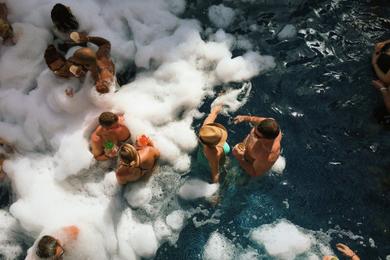
Top Party Beaches in Barbados
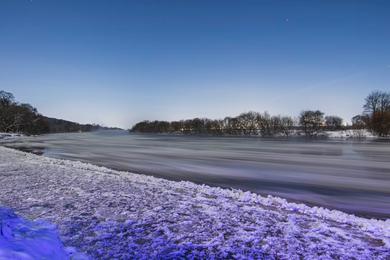
Best Party Beaches in Belarus
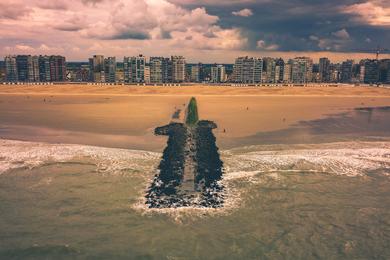
Top Party Beaches in Belgium
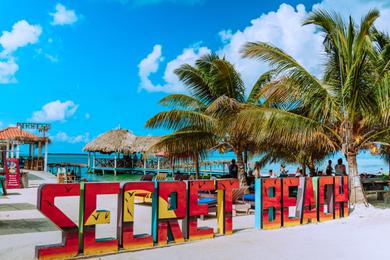
Best Party Beaches in Belize
